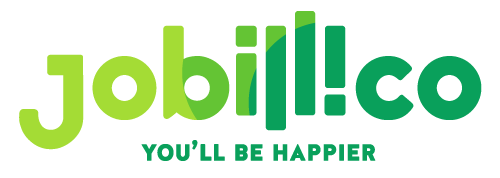9 Onboarding Mistakes That Can Ruin a New Hire’s First Impression
 Publié le 26 May 2025
Publié le 26 May 2025
For those who don’t know, hiring a new employee is a serious investment for any company, it often comes with costs, and we mean a lot of costs (recruitment expenses, training, lost productivity etc) So, how does a company get a return on that investment? The short answer is a successful onboarding process.
But the truth is, there’s no standard onboarding formula. In fact, every company adjusts the process based on the role, the industry, and what the new hire needs. BUT, and here’s the big but, there’s one thing that tends to stay consistent, and that’s the common mistakes companies make when onboarding new employees.
In no particular order, this article breaks down the 9 most common mistakes and offers actionable tips to ensure a successful onboarding experience.
So grab your favorite drink ☕️ and let’s jump in!
9 Onboarding Mistakes That Can Ruin a New Hire’s First Impression
No onboarding outreach
To start our list of mistakes, we’ve got to talk about the initial outreach, because it speaks volumes about your onboarding process and even the company’s culture.
It’s one of the most common and avoidable onboarding mistakes that HR teams tend to make, your new hire accepts the role, signs the job offer, hands in the paperwork and is likely excited (and maybe a little nervous) to get started, but if they don’t hear from you between offer and Day 1, chances are that silence turns into uncertainty.
Did you think we forgot about you? Don’t worry! A simple welcome email can go a long way.
Let them know what to expect on their first day: arrival time, dress code (if any), parking instructions, who they’ll be meeting, and any documents or items they need to bring. Better yet, you can send over a brief agenda and introduce their onboarding point of contact in advance.
It’s a way of telling them, “Hey, we’re ready for you, and we’re glad you’re joining us.” And remember that onboarding starts before Day 1, not after 😉
An example outreach template you can use with a new hire
A messy workspace
There’s nothing more embarrassing for a new recruit than walking into an office where their desk isn’t set up, the computer is missing, or the space feels neglected. It implies, “You weren’t expecting me.” And honestly, that’s a terrible way to start a new professional relationship.
And no, it’s not just about having the right tools for the job, it’s much more than that! A well-prepared workspace is a reflection of the work environment and the company culture that new hires will immerse themselves in.
And while providing the necessary equipment is a great way to make a good first impression, you can do better. Why not create a personalized welcome kit or include a thoughtful handwritten note? People love feeling valued from day one, and like any relationship, work relationships are a two-way street.
An example of a welcome kit from Notion for their new employees
Show what’s ahead
Employers need to realize that new hires want more than just tasks, they want a clear, engaging roadmap. Something that motivates them and shows there’s room to grow. But too often, companies treat onboarding like a checklist and leave professional development out of the conversation.
Now, don’t get us wrong, employees should always show a certain level of resourcefulness, and there will be plenty of time to talk about growth after onboarding, but the point is: Don’t wait for things to come up naturally, they never do, and you’re better off showing employees their development options early on to keep them motivated and focused on their goals.
While it’s not set in stone, giving managers and new hires a simple (and personalized) guide can be a terrific idea to help start conversations about goals and learning opportunities, this will help employees understand how the company operates and where they can add their bit. 👌🏻
An example of what the first-week schedule could look like
Generic onboarding programs
This one is a big piece of the puzzle that probably gets talked about less than it should, relying on standardized onboarding programs that don’t really match the needs of new hires.
When the program you put in place is too generic, and the role of your new hire is very specific, it’s very likely that some important parts of the learning process get missed out, and when that happens, employees can quickly feel lost, with the company missing out on the ROI of that talent.
The best way to overcome this? Make onboarding fit the role, not just the company, so you might build a simple, custom training plan and pair the new hire with someone who can walk them through those first few months.
Excessive administrative tasks
Overwhelming a newcomer with excessive administrative tasks is not just time-consuming but also unproductive, And instead of getting familiar with their responsibilities in the first few days, they end up spending hours and hours filling out endless paperwork, and that’s not exactly a great first impression.
We know what you’re thinking, administrative tasks are a must, and we totally agree. But collecting signatures and handing out manuals doesn’t have to feel like building the new CN Tower, and this is where the HR team can get a bit creative to optimize the process and make it a no-sweat for their new recruits.
Some companies explore the advantages of outsourcing certain onboarding functions, especially repetitive administrative work, to free up internal HR teams for more meaningful employee engagement.
By “optimization,” we mean something simple, like a quick form that gathers everything that matters into one place, important documents, signatures, consent, and everything in between. You can even attach a short video walkthrough of the employee handbook.
Too much training, too soon
Starting a new job is already a lot: new roles, new people, new everything. Now imagine getting hit with a flood of information during your first few days on the job …. yeah, it’s overwhelming 🫠
That’s why it’s on you as the employer to give them a softer landing. Share the information they need, but do it at the right time through spaced-out learning sessions so they can actually absorb it without feeling swamped.
There are plenty of ways to go about it, consider breaking things down into short video tutorials or small modules they can revisit anytime, or even try using something like the Pomodoro technique to keep the training process more digestible.
But it’s not just about simplifying the training process, these strategies actually help build real employee strength, giving new employees a chance to gain confidence little by little and start feeling empowered in their new roles.
The lack of formal schedule or process
Imagine showing up on your first day, excited and ready… and no one really knows what you’re supposed to be doing. Well, that’s exactly how a new hire might feel when there’s no clear schedule or agenda. It’s unfortunate, but not uncommon.
This suggests that the company isn’t prepared, or worse, doesn’t value their time. Ready to panic? Not so fast. A simple onboarding plan can go a long way in mapping out what the first week (or even month) looks like in the role.
Of course, new employees need to know how to do their job, but what else do they need to learn to support that goal? That’s where the onboarding plan helps out.
When employees understand their role and how to navigate company culture, they’re way more likely to settle in and perform well long term, and that brings us to our next mistake 👇
Overlooking the company culture
You’ve laid the groundwork, sorted the paperwork, and conducted the training—onboarding complete. Congratulations! You’re not done just yet, there’s one critical factor left, and that’s your company culture.
Newcomers are always interested in what your company stands for, its mission, values, and vibe. And it matters more than you might think. In fact, 21% of potential workers say that better company culture is one of the top reasons for changing jobs.
So, are you making a mistake by not introducing your company culture during onboarding? Absolutely. Does that mean your culture isn’t great? Absolutely not.
The bottom line is, no matter how great your company culture is, if onboarding doesn’t introduce new hires to it, they may feel disconnected from the team.
And the best way to to bridge that gap is through peer connections, like assigning an onboarding point of contact or hosting a casual welcome lunch. It’s a great way for new recruits to break the ice with coworkers and experience the culture firsthand.
Not collecting regular feedback
Your company’s work doesn’t end with onboarding, because, as we said at the very beginning, there’s no such thing as a perfect onboarding process. But you can keep making your program better over time by asking for real feedback from your employees.
And since everyone brings different onboarding experiences from past jobs, your best bet is to send out a quick survey and get their take on your process—what worked and what needs work.
And don’t be afraid to ask the slightly awkward questions, either, things like: “Did the workplace setup meet your expectations?”, “Could we have introduced you to our culture better?”, or “What parts of onboarding could be improved? And always ask for specifics because that’s where the most useful insights hide.
A couple of questions you could ask to collect feedback
Over To You
Your onboarding process is the first real impression a new hire gets of your company, and if everyone’s headed in different directions, you’ll never cross the finish line together.
And now that you know the most common onboarding mistakes, just reading it isn’t enough, right? Now go build a solid onboarding process and make life way easier for your new hires 😌
Want to learn even more about employee onboarding? Well, that’s what we’re here for! 👉🏻 Head over to our blog, you’ll find plenty of insightful resources there.
Thanks for reading till the end 👋







